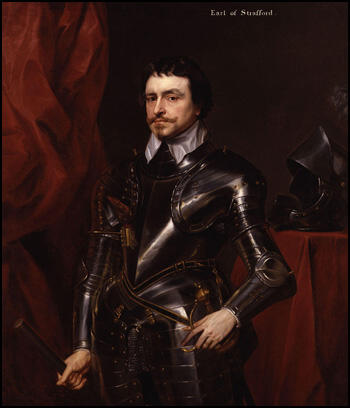Thomas Wentworth, Earl of Strafford
Thomas Wentworth was born in London in 1593. The son of a large Yorkshire landowner, Wentworth was knighted when he was only eighteen.
In 1614 Wentworth was elected to the House of Commons. He was originally critical of Charles I and in 1626 opposed attempts by the king to impose forced loans. In 1628 he became a Royalist and the king rewarded him by appointing him President of the Council of the North. In this role he supported William Laud, the Archbishop of Canterbury, and his religious reforms.
In 1632 Wentworth was appointed Lord Deputy of Ireland where he successfully increased royal revenues. This involved him forming an alliance with Roman Catholics against the Protestants.
Wentworth was recalled to England by Charles I in 1639 to help him deal with a troublesome House of Commons. The following year he was granted the title, the Earl of Strafford.
William Laud upset the Presbyterians in Scotland when he insisted they had to use the English Prayer Book. Scottish Presbyterians were furious and made it clear they were willing to fight to protect their religion. In 1639 the Scottish army marched on England. Charles I, unable to raise a strong army, was forced to agree not to interfere with religion in Scotland. Charles also agreed to pay the Scottish war expenses.

Charles did not have the money to pay the Scots and so he had to ask Parliament for help. This time Parliament was determined to restrict the powers of the king. Under the leadership of John Pym, a law was passed which stated that Parliament should in future meet every three years. It was also decided to take away the king's right to dissolve Parliament. Other laws were passed making it illegal for the king to impose his own taxes. Parliament then passed a law that gave members control over the king's ministers.
Wentworth was arrested and sent to the Tower of London. Charged with treason his trial opened on 22nd March, 1641. The case could not be proved and so his enemies in the House of Commons, led by John Pym and Henry Vane, resorted to a Bill of Attainder. Charles I gave his consent to the Bill of Attainder and Thomas Wentworth, Earl of Strafford, was executed on 12th May 1641.

